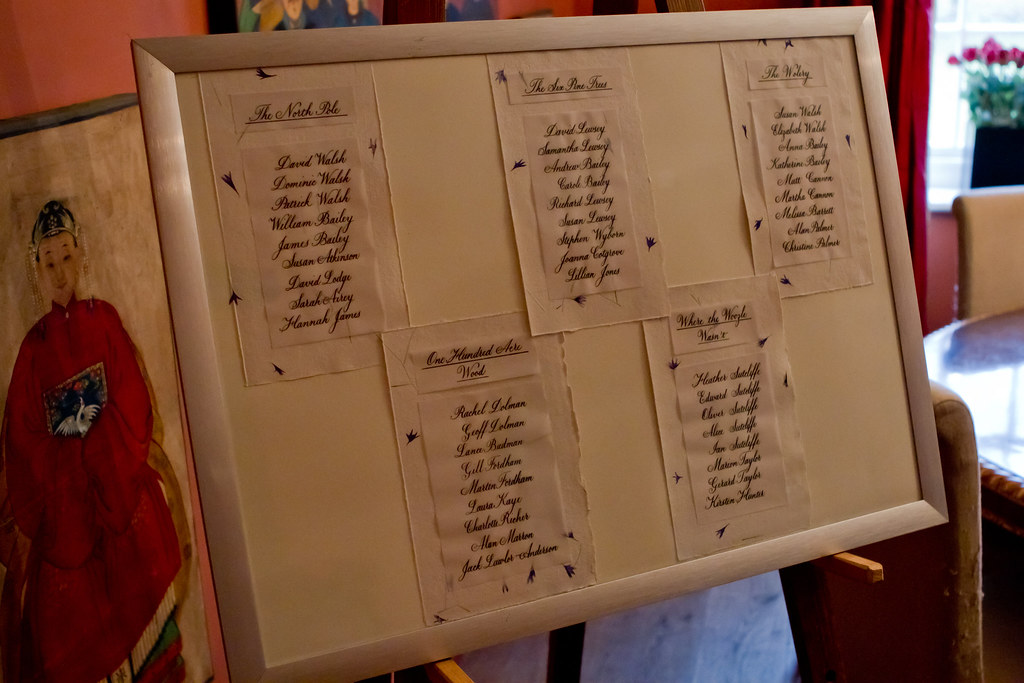 |
| Laid out but not mounted yet. |
I think it did look nice in the end, but writing copperplate on vellum paper is not to be attempted lightly (or if you have a short temper). The trouble is that vellum paper (and we're talking vellum paper, as opposed to proper Vellum here) doesn't absorb ink very well. Or at all, really. If you try and use gouache then the paper crinkles up and you loose the intensity of colour as it dries; if you use ink (I used Moon Palace Sumi ink in the end) it keeps it's lovely intensity but takes a long time to dry. The surface tended to be both skiddy and scratchy all at the same time - in short an absolute nightmare to write on. I attempted most of the tables at least twice, and found it really difficult to control uneven descenders and wobbly ascenders. Persistence, however, paid off and I finally had an acceptable version of each for the finished thing. I have a sneaking suspicion that if you prepare the surface with gum sandarac then writing on vellum paper becomes a lot easier - unfortunately I had neither the time nor the means to experiment with this before needing the finished thing.
 |
| Cutting and sticking materials. |
Other important equipment for assembling the plan can be seen on the right and include: a putty rubber, a prit-stick, scissors, a soft pencil, double sided tape, a very sharp scalpel + cutting mat (be careful with these!), and a metal ruler.
The nice thing about khadi papers is that they can be torn along the edge of a ruler giving you a nice straight edge, but maintaining the nice ragged, rustic look of the natural edges.
All in all I think it turned out rather well considering I'd never attempted anything like it before, and was really just making it up seat-of-the-pants style. The finished thing, mounted and framed looked like this:
 | ||||
| (Photo courtesy of the wonderful Kirsten Hunter) |
Tomorrow, I'm very excited to be heading into London to attend the CLAS Living Letter IV exhibition: All that Glisters at the Oxo Gallery on the South Bank. It'll also be visiting the Design Centre at Sunderland University, and Bath Central Library over the coming weeks, so do go along if you have the opportunity - it features beautiful works from some of the country's top calligraphers and I am anticipating being truly inspired by their skill (I've had a sneak peak at the catalogue and know I won't be disappointed). I'll report back here once I've recovered!



